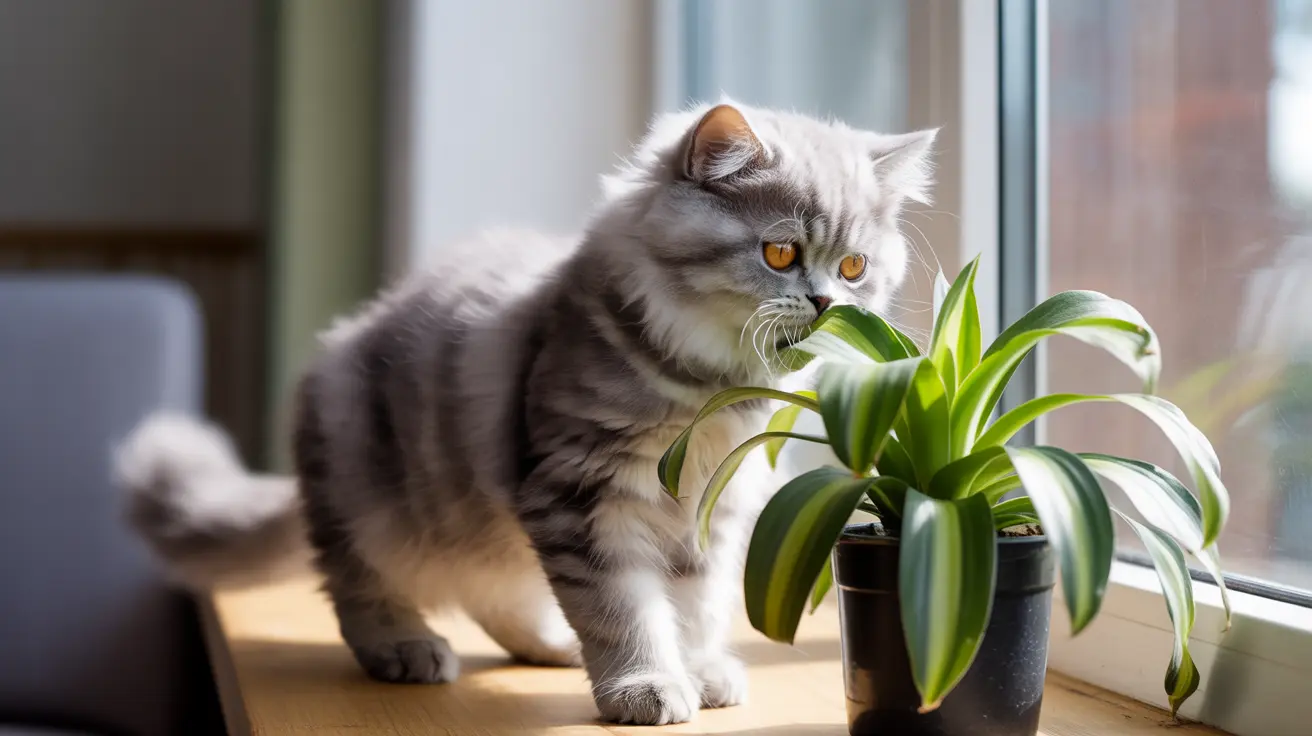If you're a cat parent with houseplants, you need to know about dracaena toxicity. These popular ornamental plants, while beautiful, pose a serious health risk to our feline friends. Understanding the dangers of dracaena and recognizing symptoms of poisoning could save your cat's life.
In this comprehensive guide, we'll explore why dracaena plants are toxic to cats, what symptoms to watch for, and how to keep your pet safe. We'll also discuss treatment options and provide alternative pet-safe plant suggestions for your home.
Understanding Dracaena Toxicity in Cats
Dracaena plants contain saponins, natural compounds that protect the plant from pests but are harmful to cats. Unlike some animals, cats lack the ability to properly process these substances, making them particularly vulnerable to dracaena poisoning. All parts of the plant – leaves, stems, and roots – are toxic if ingested.
Common Dracaena Species That Pose Risks
Several popular dracaena varieties are commonly found in homes, including:
- Dragon Tree (Dracaena marginata)
- Corn Plant (Dracaena fragrans)
- Janet Craig Plant (Dracaena deremensis)
- Song of India (Dracaena reflexa)
Warning Signs of Dracaena Poisoning
If your cat has consumed any part of a dracaena plant, watch for these symptoms:
- Excessive drooling
- Vomiting (sometimes with blood)
- Diarrhea
- Loss of appetite
- Lethargy
- Dilated pupils
- Weakness or depression
Emergency Response and Treatment
If you suspect your cat has ingested dracaena, immediate action is crucial. Contact your veterinarian or the ASPCA Animal Poison Control Center right away. Don't wait for symptoms to appear or worsen – early intervention provides the best chance for a full recovery.
Treatment typically includes:
- Induced vomiting (under veterinary supervision)
- Administration of activated charcoal
- IV fluid therapy
- Supportive care and monitoring
Prevention and Safe Alternatives
The best way to protect your cat is to keep dracaena plants out of your home entirely. Instead, consider these pet-safe alternatives:
- Spider Plants
- Boston Ferns
- African Violets
- Bamboo Palm
- Christmas Cactus
Frequently Asked Questions
Is dracaena toxic to cats and what symptoms should I watch for if my cat ingests it?
Yes, dracaena is toxic to cats. Watch for symptoms including vomiting, drooling, diarrhea, lethargy, and dilated pupils. These typically appear within a few hours of ingestion.
What should I do immediately if my cat eats a dracaena plant?
Contact your veterinarian or the ASPCA Animal Poison Control Center immediately. Don't wait for symptoms to develop or attempt home treatment without professional guidance.
Which dracaena species are most commonly toxic to cats?
All dracaena species are toxic to cats, including Dragon Tree (Dracaena marginata), Corn Plant (Dracaena fragrans), and Janet Craig Plant (Dracaena deremensis).
Are there any safe houseplants I can keep around cats instead of dracaena?
Yes, many pet-safe alternatives exist, including Spider Plants, Boston Ferns, African Violets, and Christmas Cactus. Always verify a plant's safety through the ASPCA's toxic plants database before bringing it home.
How can I prevent my cat from chewing on or ingesting dracaena plants at home?
The best prevention is removing all dracaena plants from your home. If you must keep them, place them in completely inaccessible areas or behind closed doors where your cat cannot reach them.
Remember, while dracaena plants are beautiful additions to home decor, your cat's safety should always come first. If you currently have these plants in your home, consider rehoming them or replacing them with pet-safe alternatives. Being proactive about plant safety can prevent emergency veterinary visits and keep your feline friend healthy and happy.






